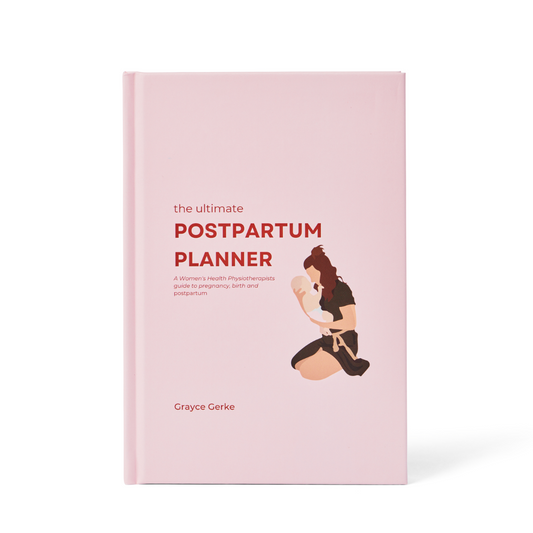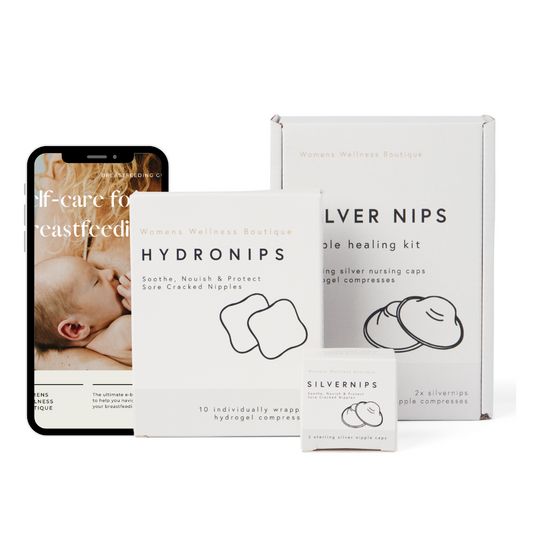
C-Section Pouches: Unraveling the Dynamics of Scar Formation and Adhesions
Childbirth is a transformative experience for women, and while many opt for natural deliveries, Cesarean sections (C-sections) are sometimes medically necessary.
While C-sections offer a safe delivery method, they come with their own set of considerations, including the formation of scars and adhesions.
Let's delve into the intricate world of C-section pouches, shedding light on the role of scar formation and adhesions.
-
Prioritise Healing
Begin your post-C-section driving journey by consulting with your healthcare provider. RANZCOG emphasises the significance of seeking professional guidance before resuming driving after abdominal surgery. Prioritising your healing process ensures a safe and gradual transition.
-
Understand your Body Signals
Acknowledge that recovery time varies for each individual. The RANZCOG guidelines stress the importance of recognising your body's limits and avoiding strenuous activities, including prolonged periods of driving, in the initial stages of recovery.
-
Adjust Your Environment
Consider RANZCOG's recommendations on adjusting your car seat for comfort and safety. Ensuring proper support for your abdominal area, especially the incision site, is crucial. Take the time to readjust your seat, steering wheel, and mirrors to accommodate your postpartum body.
-
Start Small
Plan your return to driving by starting with short and familiar routes. This aligns with RANZCOG's emphasis on gradually increasing physical activity after abdominal surgery. Begin with brief trips to build confidence, and listen to your body as you extend the duration of your drives.
-
Additional Support
RANZCOG recommends using a small pillow or cushion strategically to provide extra support to your abdominal area. Incorporate this tip into your driving routine for added comfort during the initial phases of post-C-section driving.
-
Insurance Policies
Before resuming driving, review your insurance policies. Some insurers may have specific guidelines regarding post-surgery driving. Ensure you are aware of any waiting periods or requirements to notify your insurance provider about changes in your health.
Anatomy of a C-section Pouches
The C-section pouch is an anatomical region encompassing the incision site and the surrounding tissues. Understanding the layers involved in the surgical procedure is crucial for comprehending scar formation.
-
Epidermis and Dermis:
The initial incision penetrates the skin's outermost layers, the epidermis and dermis. These layers house blood vessels, nerves, and sweat glands, all of which play a role in the subsequent healing process.
-
Subcutaneous Tissue:
Beneath the dermis lies the subcutaneous tissue, consisting of fat and connective tissue. This layer's involvement in the incision determines the depth and extent of the scar.
-
Fascial Layers:
C-sections often involve cutting through the fascial layers, which are dense connective tissues surrounding muscles. Understanding the impact on these layers is essential for predicting potential complications.
Pathophysiology of Scar Formation:
Scar formation is a multifaceted process involving various cellular and molecular events. Here's an in-depth look at the pathophysiology of how scars develop after a C-section:
-
Inflammatory Phase:
Immediately after the incision, the body initiates an inflammatory response. White blood cells migrate to the site to clean debris and prevent infections. This phase sets the groundwork for subsequent healing processes.
-
Proliferative Phase:
During this phase, fibroblasts produce collagen, the primary structural protein in connective tissue. The collagen fibers gradually replace the damaged tissue, forming the basis of the scar.
-
Remodeling Phase:
Collagen synthesis continues in the remodeling phase, and the scar undergoes changes in size, texture, and strength. The balance of collagen production and breakdown is crucial for optimal scar formation.

Factors Influencing Scar Formation:
Several factors influence how scars develop post-C-section, including:
a. Genetics: Individual genetic predispositions can impact collagen production and the overall healing response.
b. Infection: Infections at the incision site can disrupt the normal healing process, leading to abnormal scar formation.
c. Tension on the Wound: Excessive tension on the wound can result in widened scars or keloid formation.
Understanding the intricate interplay of anatomy and pathophysiology is pivotal for anticipating and managing complications associated with C-section pouches. In our next installment, we will explore the role of adhesions in post-C-section recovery.

Womens Wellness Boutique
Csection Scar Recovery Kit 2.0











Featured collection
-
 Sold out
Sold outCsection Scar Recovery Kit 2.0
Regular price $60.00 USDRegular priceUnit price per -
 Sold out
Sold outThe Ultimate Postpartum Planner
Regular price $20.00 USDRegular priceUnit price per$20.00 USDSale price $20.00 USDSold out -
Hydronips - Hydrogel Nipple Compresses
Regular price $11.00 USDRegular priceUnit price per -
 Sold out
Sold outBreastfeeding Nipple Recovery Kit
Regular price $54.00 USDRegular priceUnit price per




